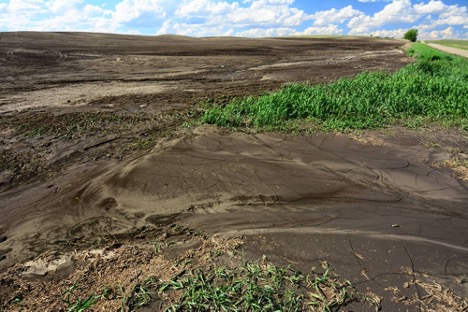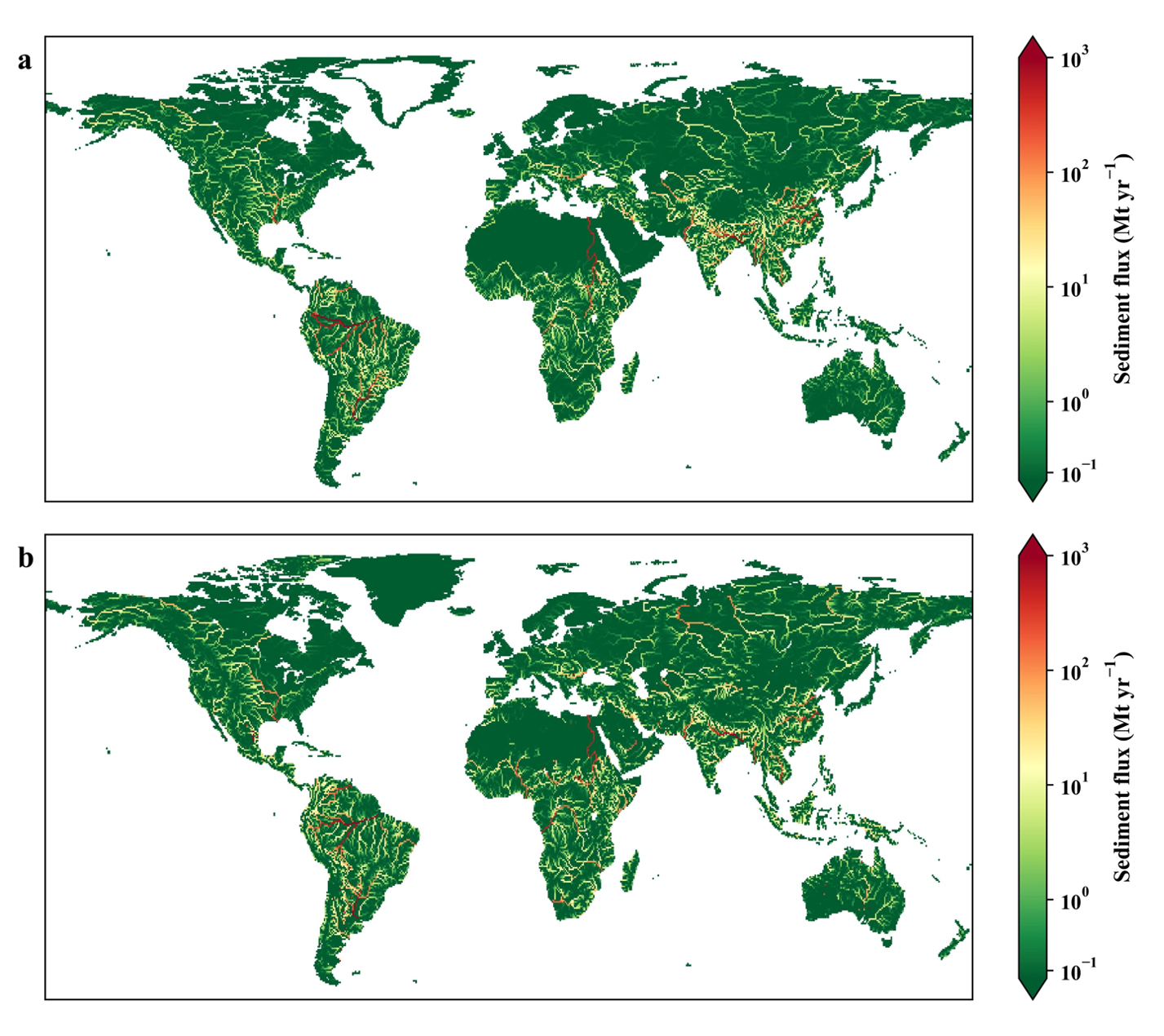Representing global soil erosion and sediment flux in earth system models

Figure 1. Soil erosion plays a crucial role in global biogeochemical cycles and food security. Image by the USFWS Mountain-Prairie | [Flickr]
The Science
Soil erosion plays a crucial role in landscape evolution (Fig. 1) , global biogeochemical cycles, and food security, but it is rarely represented in Earth system models. As a result, these models do not fully capture the impact of climate and land-use changes on land, river, and ocean geomorphology and biogeochemistry. A new study developed a global soil erosion and sediment flux model for Earth system modeling. The new model provides skillful simulations of soil erosion and sediment flux to produce credible predictions of land and river sediment dynamics in response to climate change and human disturbances.
The Impact
Researchers implemented a new model of soil erosion and sediment flux in the E3SM, which showed that conservation agriculture is an effective practice for reducing soil erosion in cropland, so its broader adoption in developing countries may improve sustainable food production. The study also indicated that deforestation will rapidly increase river sediment in tropical river basins that currently have large rainforest coverage. The new capability allows E3SM to be used to evaluate the impact of climate and land-use changes on land, river, and ocean geomorphology and biogeochemistry to improve the modeling of the food-energy-water nexus.
Summary
Soil erosion produces enormous amounts of sediment, carbon, and nutrient fluxes from land to rivers. Historical records show that it is susceptible to climate change and cropland expansion. To predict soil erosion in the context of climate and land-use changes, this study explicitly represents cropland management actions, like conservation agriculture, irrigation, and crop residue management, in the E3SM soil erosion model. The model also explicitly represents the impact of geological factors, such as lithology and glaciers, on soil erosion. The new model demonstrates good performance in simulating the spatial variability of global soil erosion and sediment flux. Compared with the two widely-used benchmark models, this model simulates similar spatial patterns of soil erosion (Fig. 2) but performs better in predicting soil erosion in mountainous regions and representing the variability of sediment flux within river basins (Figs. 6-7 in the paper). The model simulations show that conservation agriculture reduced cropland soil erosion in countries where it is well-adopted, such as the United States and Argentina. In contrast, irrigation has increased soil erosion in many Asian countries. In tropical rainforest watersheds, sediment flux is limited by soil erosion instead of sediment transport. As a result, deforestation will increase river sediment rapidly in these watersheds.
Publication
Z. Tan, L.R. Leung, H.-Y. Li, S. Cohen, “Representing global soil erosion and sediment flux in Earth System Models”, Journal of Advances in Modeling Earth Systems 14, e2021MS002756, (2022). [DOI: 10.1029/2021MS002756]
Funding
- The Department of Energy Office of Science, Biological and Environmental Research program supported this study as part of the Earth System Modeling program area through the E3SM project.
Contact
- L. Ruby Leung, Pacific Northwest National Laboratory
This article is a part of the E3SM “Floating Points” Newsletter, to read the full Newsletter check:



